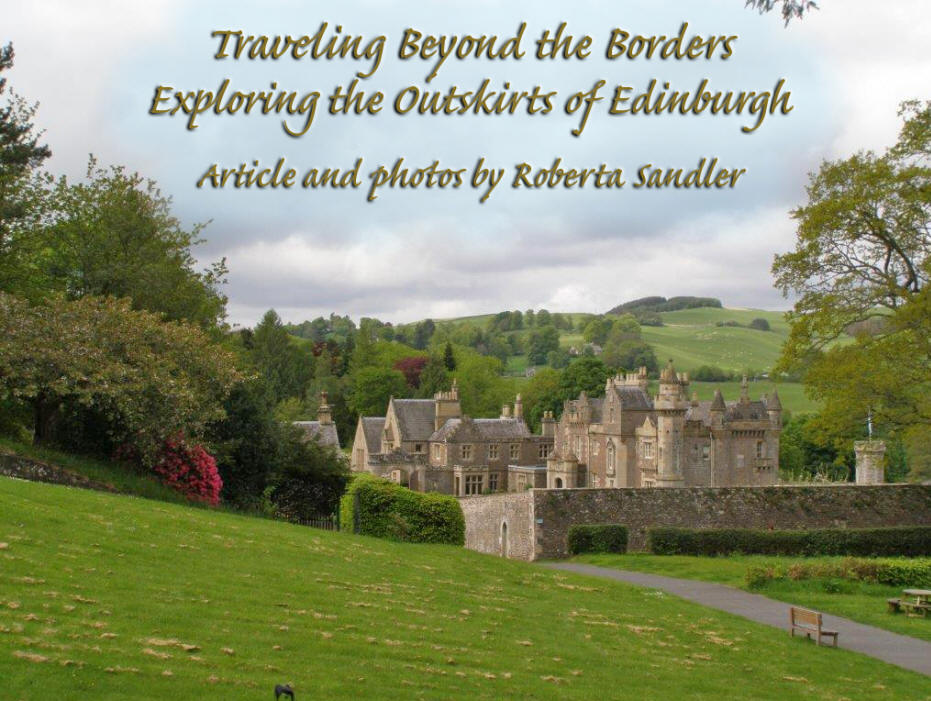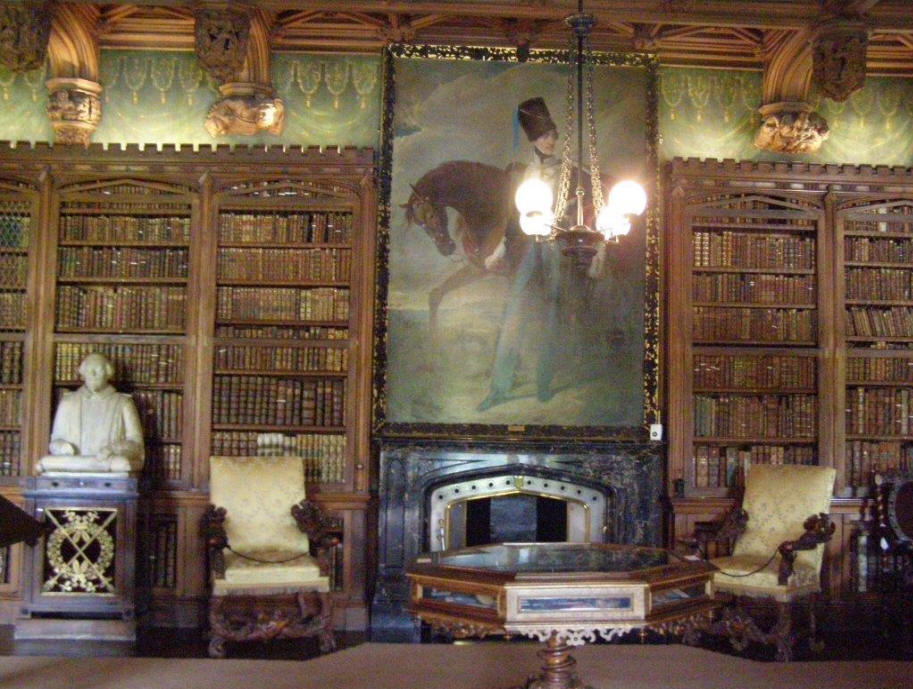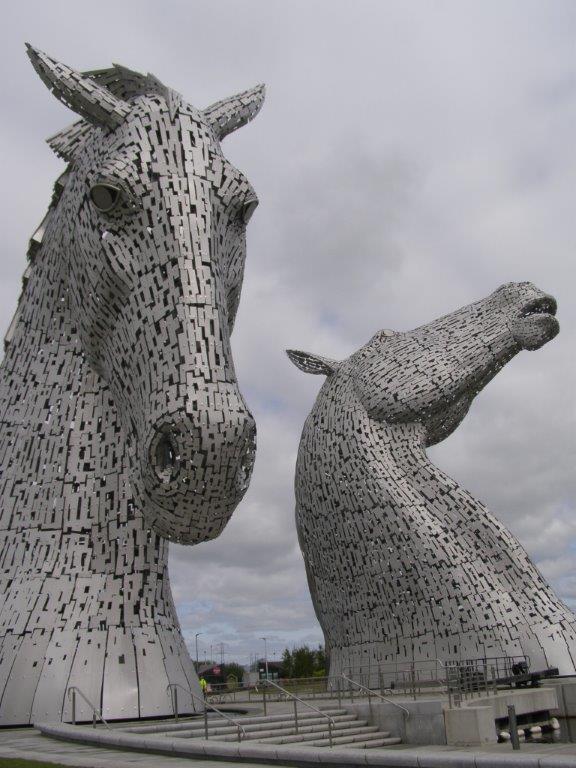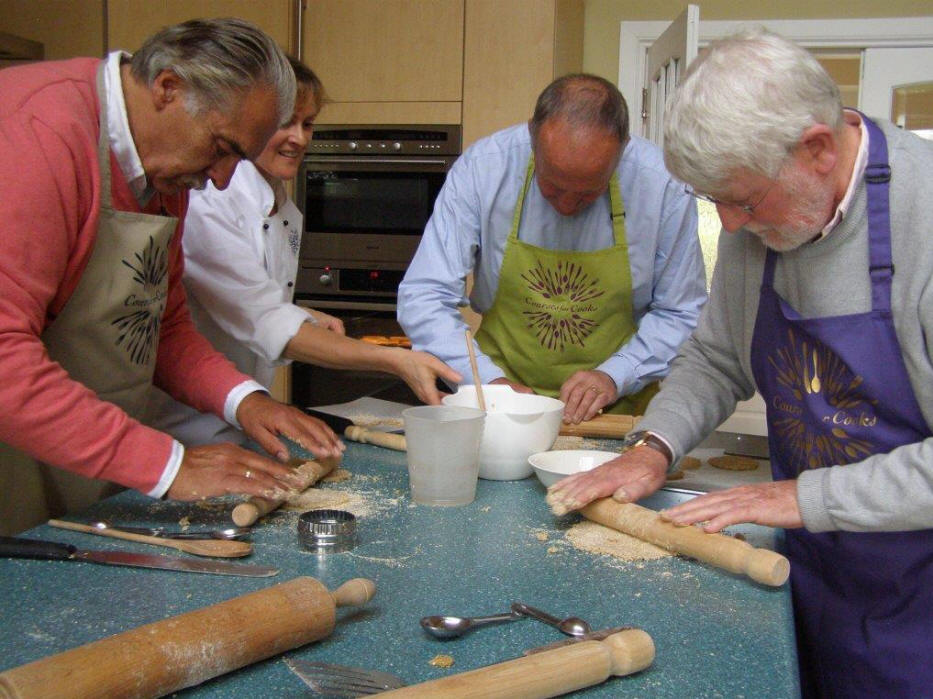|

Your cruise ship has just sailed into one of Edinburgh,
Scotland's four ports, and you're eager to disembark for a day
of exploring. Or, you've arrived for a vacation in Edinburgh via
plane or car and you're looking for attractions to visit.
Edinburgh is ripe with popular historical sights, but I
discovered that if you prefer to skip the usual tourist spots in
favor of the offbeat or lesser known, and you don't want to
venture far from the cruise ports and the city's center, there
are plenty of excursions that are "different" --- entertainingly
out of the ordinary -- on Edinburgh's outskirts.
Follow my lead. On my recent visit to Edinburgh, I
curiously headed for the Scottish Borders, the region
surrounding Edinburgh and consisting of what began as villages
or marketplace towns, some of which date to the 12th century.
They are eye candy for history or architecture buffs. As a fan
of the TV series "Outlander," I was especially happy to visit
sites where scenes from "Outlander" were/are filmed.
My hotel, Cringletie House, located in the market town of
Peebles on the river Tweed in the Scottish countryside, was
formerly a baronial castle. Today, it is a boutique
hotel-with-restaurant offering 14 cozy guestrooms with spacious
modern bathrooms. This hotel extended superb hospitality. It
wasn't merely a hotel stay. It was an experience.
In the evening, I and other guests assembled at the
hotel's rear property, where Cringletie House had arranged for a
nearby sheep farmer to bring his border collies and some of his
sheep. What followed was a delightful demonstration of
sheep-herding.
The following morning, Rachel Hammerton, director of the
Border Kilt School, showed guests the mathematically detailed,
intricate art of kilt-making. Kudos to Cringletie House for
providing entertainment like this to guests.
If a man's home is his castle, Sir Walter Scott, the
author of "Ivanhoe" and "Rob Roy," sure lived in a reasonable
facsimile. His castle-like house, Abbotsford, built ca. 1824, is
located in Galashiels in the Scottish Borders. The house is
admirably tended by the Abbotsford Trust
Abbotsford's book-stacked library, including
one-of-a-kind works; the costly furnishings, Scott's sword
collection; and Abbotsford's gardens all reflect Scott's
literary success.
Linlithgow, located in West Lothian, is
about 20 miles from Edinburgh, and is home to Linlithgow
Palace, the birthplace of King James V and his daughter, Mary,
Queen of Scots. The entrance and corridors served as Wentworth
Prison in Outlander scenes. Construction of Linlithgow Palace
began in 1424. Small window openings now dot the lonely ruins of
the roofless palace, like holes in a fort bombarded by cannon
fire.
 |
|
Library at Abbotsford, Sir Walter Scott's home |
Yet, as I wandered through rooms and corridors, I sensed
a grandeur that once existed here. That grandeur survives in the
central courtyard's elaborately-carved, tiered fountain that
King James V built in 1538. Legend says that wine flowed from
the fountain.
 |
|
Fountain at Linlithgow Palace |
In spite of its storied past, the burgh of Linlithgow
gives a nod to the future by going where no man has gone before.
A plaque was installed in Linlithgow in 2007 to commemorate
Scotty, the fictional chief engineer of the "Star Trek"
starship, Enterprise. You see, Scotty was born in
Linlithgow in the year 2,222.
Culross Palace and Village in Fife is located about
twenty miles from Edinburgh. In its thousand-year history,
Culross has been a religious center, a market town, a Royal
Burgh and a center for coalmining, salt-mining and the making of
"girdles" (griddles), which 14th-century Scottish king, Robert
the Bruce, ordered for his soldiers so that out in the field,
they could eat their oatcakes roasted rather than cold.
 |
|
Tomb of (King) Robert the Bruce beneath
pulpit at Dunfermlne Abbey
|
Culross is so charmingly quaint that I thought I had
wandered into Brigadoon. It's a sloping town with small,
red-roofed houses, many of them built in the 1600s and still
used as private homes. The Town House (meeting hall) had a
Witch's Jail. In 1597, Robert the Bruce's descendant, Sir George
Bruce, a successful merchant, built a house here. A successive
owner dubbed it Culross Palace.
 |
|
Culross Palace |
The National Trust for Scotland bought Culross Palace,
beautifully restored it and opened it for tours. The tour gave
me good insight into the lifestyle of a prosperous Scottish
gentleman during the 1600s. Paint was costly. Sir George painted
his house (ochre), a symbol of status. His property included a
garden, another status symbol. In a scene from Outlander,
Claire, a healer (nurse), picked medicinal herbs from the
garden.
When a house has a High Hall for dining, a Principal
Stranger's Room for a visiting important guest; a stone
strong-room for protecting money; a four-poster bed with a
moveable panel that lets out body odor and lets in fresh air;
and a kitchen with a water supply that extends into the home's
bakery, it's not hard to deduce that the owner is rich.
Emma
Chalmers, whose company, Mary's Meanders, conducts guided
historic tours, told me that she has loved going to Culross even
before it was used in Outlander. "It gives you a real
glimpse into how people lived in the 16th and 17th centuries,"
she says. "Plus, the Sticky Toffee Pudding in the Red Lion Inn
in Culross is worth traveling to."
When I visited Dunfermline, a lively town located in
Fife, 30 minutes from Edinburgh. I found it pulsating with
attractions, including the Andrew Carnegie Birthplace Museum,
the world's first Carnegie Library and (New Yorkers, take note!)
a Carnegie Hall. For lunch, I enjoyed The Bruery, a rustic pub
on Canmore Street. It has a menu of simple, tasty foods and it
operates a micro-brewery on the lower level.
Here, too, is the beautiful Abbey Church of Dunfermline.
The Abbey was founded in the eleventh century. Several kings and
queens are buried here, including Robert the Bruce, who reigned
from 1306-1329. Beneath the pulpit, his body rests inside a
brass-covered tomb. His heart is buried at Melrose Abbey.
Falkland Palace and Garden, also in Fife, was built by
King James IV and King James V between 1450 and 1541. Now under
the care of the National Trust for Scotland, the
Renaissance-style palace -- it was used as a hunting lodge -- is
magnificent. I was awed by its history, exquisite furnishings
and wall tapestries, and its vibrant garden of flowers and beech
and maple trees that seemed to be colored by an entire box of
crayons.
 |
|
Entrance to Falkland Palace |
The palace's east range is a ruin, but what survives
stands tall and strong, and what may be most notable about the
palace is the extant Royal Tennis Court built in 1539 for King
James V. The roofless court has four walls (the ball was allowed
to hit the walls). When it was the king's turn, a servant
would serve or hit the ball to the king, who would then hit it
over the net, toward a player. That reportedly is how the tennis
term "serve" began.
Falkirk, about 20 minutes from Edinburgh, is home to The
Kelpies, two horse heads, each made from 18,000 pieces of
steel. Lighted at night, the stunning 100-feet-tall Kelpies,
each weighing 300 tons and touted as the world's tallest equine
sculptures, resemble sea creatures rising from the Forth and
Clyde Canal. A guided tour led me inside the head of the horse
titled "Head Down." There, I watched sunlight dart between its
464 steel plates.
Tourist-wise, the best hands-on excursion
I've experienced is my brief cooking lesson from a chef, Jenny
Thomson, who conducts Courses for Cooks. At her Victorian Manse
in Fife, I and three male participants followed Jenny's simple
directions to make oatmeal cakes. We made oatmeal batter, rolled
it, flattened it with a rolling pin, stamped it with a cookie
cutter, placed it on a baking sheet that Jenny slid into her
oven, and Presto!
 |
|
The Kelpies, horse head
sculptures in Falkirk (Scotland) |
Jenny conducts Outlander-inspired cookery courses, meals
common in 18th-century Scotland. Her 2-4 hour courses range from
making perfect puddings to making vegetarian feasts.
Participants get to eat what they cook. Jenny uses herbs from
her garden. Her classes usually are for four people maximum. I
laughed a lot. Jenny made it fun. This was definitely offbeat,
an ideal excursion for a husband and wife and everyone else.
 |
|
A cooking lesson by Jenny Thomson at Courses for
Cooks
|
Shopping was not on my agenda, but in Leith, 15 minutes
from Edinburgh's city centre, I stepped inside the Kinloch
Anderson shop to browse. Beyond the racks and displays of kilts,
ladies-wear and menswear that have made Kinloch Anderson the
tailor and kilt-maker to HRH The Prince of Wales (Prince
Charles), HM The Queen and HRH the Duke of Edinburgh (Prince
Phillip), I came upon the Kinloch Anderson Heritage Room.
It was like discovering a wonderful museum. Via signage,
photos and clothing displayed behind glass, the history and
expansion of Kinloch Anderson unfurls, beginning with William
Anderson, who founded the company in 1868; the six generations
continuing the long-running company; the link to the Royal
family; the company's tartan designs, etc. Through the Heritage
Room's viewing window, I observed an employee sewing a kilt.
Travelers with days to sightsee can visit many of these
tourist spots on the outskirts of Edinburgh, but cruise
passengers with limited time can still make choices among these
memorable excursions. As I discovered, these attractions are too
enlightening to ignore.
Some of my sightseeing was made easy, thanks to Clan
Mackenzie Routes, a tour company with a personable,
knowledgeable van driver-guide for a maximum of six people.
Pickup and drop-off in Edinburgh.
For more information:
www.cruiseforth.com
http://www.cringletie.com
http://www.scotsabbotsford.com
http://www.linlithgow.com
http://www.nts.org.uk/Property/Royal-Burgh-of-Culross
http://www.dunfermlineabbey.co.uk
http://www.nts.org.uk/Property/Falkland-Palace-and-Garden
http://www.visitfalkirk.com
http://www.coursesforcooks.com
http://www.kinlochanderson.com
http://www.clanmackenzieroutes.com
http://marysmeanders.co.uk
American Roads and
Global Highways has so many great articles you may
want to
search it for you favorite places or new exciting destinations.
|